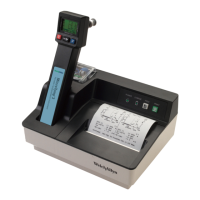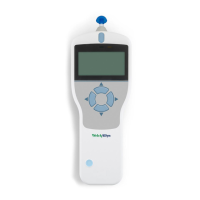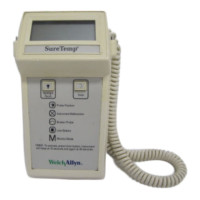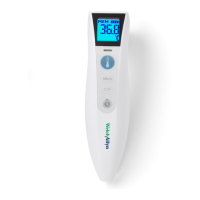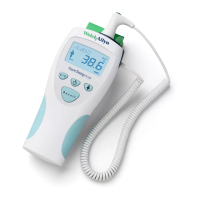Guidelines for Screening
(For Hearing Impairment and Middle Ear Disorders)
introduction
In a non-medical setting, tympanometry can be useful in determining
the need for a medical referral. However, abnormal tympanometric
results occur not only in patients that have ear disease that requires
medical attention, but also in subjects with transient conditions that
resolve without medical intervention and in ears that have residual
effects of previously-controlled disease. Consequently, it is unwise
to base the decision of a medical referral on tympanometric results
alone. Screening protocols that have done so resulted in an exces-
sively high over-referral rate (see Margolis and Heller, 1987, for a
discussion).
A recommended screening protocol (Margolis and Heller, 1987) for
determining the need for medical referral is illustrated on page 34.
The protocol relies on information derived from history, visual
inspection of the ear, audiometric screening, and tympanometry.
The use of each type of screening data is discussed below.
Note on Tympanometry
Because abnormal tympanograms occur in transient middle ear
conditions that do not require medical attention, the occurrence of
tympanometric abnormalities must be interpreted with caution. Some
tympanometric abnormalities are cause for an immediate medical
referral, while others warrant a referral only if they persist over an
extended period of time.
@
Recent Ear Pain/Discharge
Ideally, the decision for or against medical referral would incorporate
a consideration of the complete case history. However, it is often not
feasible to obtain a thorough history in a screening protocol. Any
recent history of otalgia (ear pain) or otorrhea (discharge from the
ear), however, is cause for immediate medical referral. Further testing
is not necessary.
0
Visual Inspection of the Ear
Although the clinician administering the screening may not be a
skilled otoscopist, the protocol should include an inspection of the
ear. Sometimes visual evidence of ear disease can be obtained
without an otoscope, e.g. otorrhea and developmental defects. In
other cases, otoscopic inspection may reveal abnormalities that
usually can be detected by the clinician with a moderate amount of
experience. The following conditions should result
in
immediate
medical referral:
32
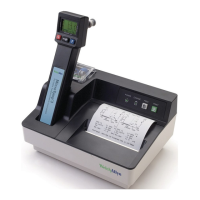
